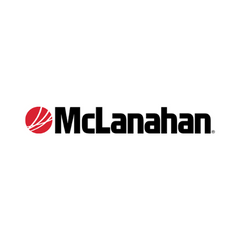Cargill, a company well known for the inputs it can provide to a dairy, is now turning its focus to outputs. By installing three anaerobic digesters on dairy farms in southern Idaho, Cargill looks to gain insight into renewable energy and grow its trading business.
“We’re in a mode now to learn and understand renewable energy from farm and food waste,” explains Jay Ritzen, managing director, Cargill Environmental Finance.
Installing and operating digesters is a small part of the company’s Global Emissions, European Power and Gas Trading business unit to enhance the direct participation of Cargill in the renewable energy field. It also fulfills a spot adjacent to other company business units, such as animal nutrition and trading.
Currently in the “proof of concept” phase, there is one digester up and running, one in commission and a third one set to start in the next few months. Cargill spent about $8.5 million to build a 2.25 megawatt digester and generator facility at the 10,000-cow Bettencourt Dairy in Hansen, Idaho. A second digester on the Bettencourt Dairy B6 Farm in Jerome, Idaho, is now converting manure from the farm’s 6,000 cows into 1 million kilowatt-hours of electricity per month. The third digester project is planned for a 5,500-cow dairy near Idaho Falls, Idaho.
All power will be sold through an agreement with the Idaho Power Co. After the project has proven itself “for a reasonable amount of time,” Idaho Power says it expects the two companies will enter into a long-term energy sales agreement.
Cargill is also focused on having all three digesters perform in a “best- in-class” way. If that is achieved to its standards, the company will look to grow this concept across the country, Ritzen says.
For now, it has focused specifically on the Northwest because of the existing infrastructure the company has there. In order to own and operate multi-million-dollar digesters, Ritzen says a good operations team needs to already be in place. That will be a key component in where the project will grow in the future. It will also look to markets where power rates are attractive.
Potential dairies to feed these digesters would be larger than 4,000 head, use a flush or scrape collection system and have a solid infrastructure of their own, lists Ritzen.
Wherever the digesters may be placed, both the dairy and the nearby community stand to benefit through greenhouse gas abatement, reduction of odor, management of waste and creation of renewable energy.
“We look to environmental innovation as a way to preserve and protect the environment,” says Ritzen. “That includes using energy and resources more wisely in our own operations and helping our customers shrink their environmental footprints.”
Along with generating renewable electricity, the project will also generate carbon credits from reduced methane emissions in the atmosphere. These emission offsets will help grow Cargill’s base trading business. The Minneapolis, Minnesota-based agricultural conglomerate is extremely experienced in trading power, gas and carbon credits. These new digesters will help fuel those sectors of the business.
Not only does Cargill own and operate the digesters, but it also works hand-and-glove with the dairy to see that other facets of the farm complement the digester’s operation, Ritzen says. For instance, feeding practices can impact consistency for digesters and Cargill’s Animal Nutrition business unit will work with the dairies to create a ration and see that it is kept consistent for the cows and the digester.
Ritzen says third-party ownership of digesters is becoming more popular across the U.S.
“The digester industry is a constantly evolving sector,” he says. “Dairymen are finding they want to be focused on being a dairyman and taking good care of cows. They are looking for someone from the outside to take ownership and operation of the digester.”
If this initial Idaho project works well, Cargill plans to provide that service for the industry. PD

-
Karen Lee
- Midwest Editor
- Progressive Dairyman
- Email Karen Lee
Is this right for you?
1. Do you have more than 4,000 cows?
2. Would you like to reduce your farm’s odor?
3. Do you want to aid in the creation of renewable energy?
4. Are you interested in installing a digester?
5. Do you have space for a digester at your dairy?
6. Would you like to remain focused on your dairy herd?
7. Could you allow a third party to own and operate a digester at your operation?
8. Do you live in a market with attractive power rates?
9. Do you have a flush or scrape manure collection system?
10. Could you adapt your nutrient management plan to work with digested products?




